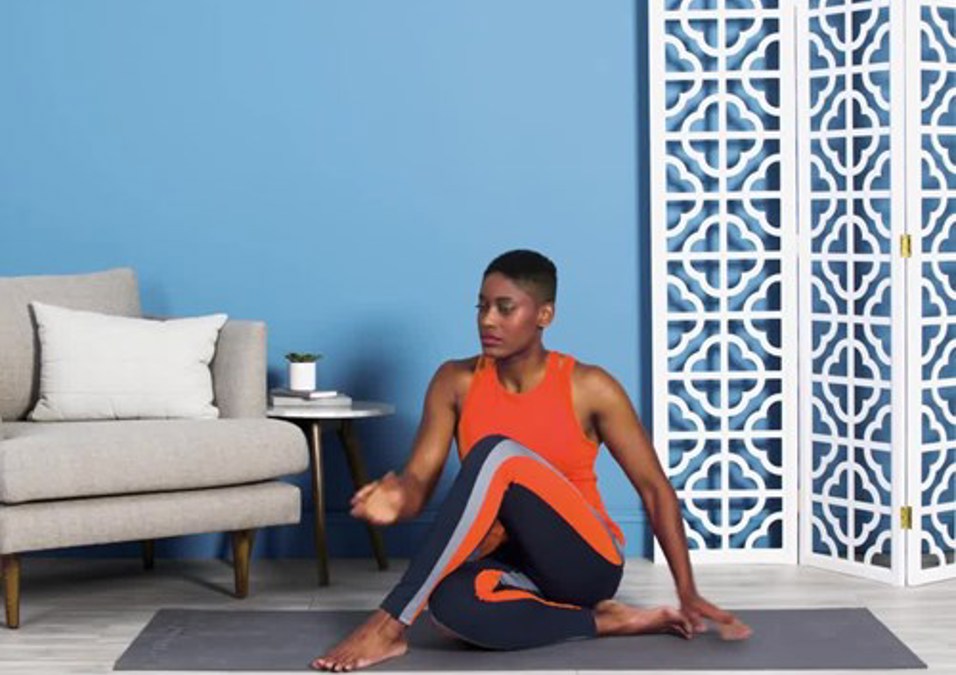The opinions shared in the GymNation blog articles are solely those of the respective authors and may not represent the perspectives of GymNation or any member of the GymNation team.
Don’t compromise on your fitness, instead practise some yoga in bed!

SIGN UP FOR YOUR FREE DAY PASS TODAY!
Recently, Anshuka Parwani, a celebrity yoga trainer shared a video on Instagram showing various yoga asanas that can be performed on the bed. "Stop daydreaming while lying in bed, instead do some Yoga," she captioned the video.
Do you find it challenging to leave your cozy bed and make your way to the gym? You're not alone; many of us have felt the same way. However, this doesn't imply that your physical well-being should be neglected. Engaging in yoga is still an option, even from the comfort of your bed.
Demonstrating the same is celebrity yoga trainer Anshuka Parwani, who is known for training numerous A-listers such as Kareena Kapoor Khan and Alia Bhatt.
Not long ago, she posted a video on Instagram demonstrating different yoga poses that can be executed on a bed. She encouraged her followers to be active even while in bed, captioning the video with, “Stop daydreaming while lying in bed, 🛌 instead do some Yoga ☺️.”
read more about : Yoga
Forward fold with pillow (Hold for 1-2 minutes)
The seated forward bend (Paschimottanasana) is a classic pose from Hatha yoga. According to Jiggayasa Gupta, a fitness and nutrition coach, FITTR, it helps stretch the spine and release tension from the back, shoulders and neck, improves digestion, relieves stress and anxiety, increases blood flow throughout the body and helps relieve common complaints during menstruation. Beginners can use a pillow for support.
*Sit or stand in a comfortable position
*Inhale as you raise your arms.
*As you exhale, engage your thighs, pull the belly in and bend forward, hinging from the hips.
*Place your hands/fingertips on the floor, in front of your feet or next to your feet, or hold onto the back of your ankles or calves
*Keep your hips over your heels as you press your heels into the floor. Roll the top of your inner thighs slightly in.
*Keep the neck relaxed.
*Lengthen your spine as you inhale. Go deeper into the pose as you exhale.
However, Gupta noted that anyone who has knee, hips, pelvis, shoulders, rib cage, neck or spinal injury should avoid practicing this pose.
Lateral stretches (10x each side)
Lateral stretches offer a range of benefits, from strengthening the core muscles to increasing lung capacity and blood circulation. It also opens and stretches the muscles between the ribs and the improves the overall posture, says Gupta.
Steps:
*Sit or stand in a comfortable position
*Inhale as you raise your arms.
*As you exhale, engage your thighs, pull the belly in and bend laterally
*Place your hands/fingertips on the floor, in front of your feet or next to your feet, or hold onto the back of your ankles or calves
*Keep the neck relaxed
*Lengthen your spine as you inhale. Go deeper into the pose as you exhale
Butterfly pose
Also known as Baddha Konasana, butterfly pose is a beginner level and meditative yoga asana that originated from Hatha Yoga. It is named after the movement of the legs like a butterfly.
It helps improve posture, body awareness, flexibility and also loosens the pelvic floor, relieves menstrual pain and boosts fertility.
Steps:
*Sit in a comfortable position, bring the soles of your feet together, a comfortable distance away from your pelvis.
*Fold forward from the hips, allowing your spine to round, placing your hands in front of you.
*Relax your legs and spine and allow gravity to work with your body weight.
*Hold for a few minutes. Eventually this pose can be held up to 20 minutes.
*To come out of the pose, use your hands to push the floor away and allow your spine to slowly unroll.
*Use your hands to bring your knees towards each other.
*Place your arms behind you and lean back to release your hips and straighten your legs.
*Allow your body to settle in this seated position, before moving to a counter pose.
The expert said that anyone with sciatica and lower back injuries should skip performing this asana.
Seated pigeon pose (Hold for 1-2 minutes on each side)
Seated pigeon pose is a variation of the traditional pigeon pose (Eka Pada Rajakapotasana), which is a hip-opening forward bend.
“Pigeon Pose can help stretch muscles surrounding your hips and lower back, such as the hip flexors, which are commonly tight due to excess sitting. It may also support digestion and mental well-being,” said Gupta.
Steps:
*Begin in downward-facing dog pose and press into your hands and feet, straighten your legs and raise your hips up towards the sky.
*Raise the right leg off the ground and bring your right knee to the back of your right wrist.
*Rotate your right shin so that it’s parallel with the front of your mat
*As you bring your right leg to the mat, keep your left leg straight as it reaches the ground
*Bring your right knee outward so it’s farther to the right than your hips and ensure your right foot is dorsiflexed (flexed toward the shin). Gently lower your right buttocks towards the ground but ensure you’re keeping your weight equally distributed between both hips. If this is too difficult, place a folded towel underneath your right buttocks.
*Place both hands under your shoulders and gently press into the palms of your hands to straighten and elongate your spine. Look straight forward and feel the stretch. At this point, you have achieved classic pigeon pose
Gupta said, “Pregnant women and anyone having chronic musculoskeletal injuries should consult with their doctor before performing this asana.”
Breathwork (Sit in a comfortable position and breathe)
Breathwork refers to any breathing technique whether practitioners intentionally change their breathing pattern. It involves breathing in a conscious and systematic way to promote deep relaxation and increase energy flow to the body.
*Start slow, start small, and work your way up.
*You want to condition your nervous system.
*Engage your diaphragm allowing the lower abdomen filling and emptying.
*Place a hand on your belly and practice pushing it in and out.
However, Gupta noted that anyone with severe heart issues – including cardiac arrhythmia, slow heart rate, high blood pressure, angina or chest pain, a recent heart attack, heart disease or any other heart condition should be cautious before beginning a breathwork practice.
Happy baby pose
Happy baby pose, also referred to as Ananda Balasana, is a stretch common to yoga and Pilates. It involves lying on your back and rolling from side to side.
The asana is a relatively easy movement, so it’s ideal for beginners. It helps reduce lower back pain, eases stress and anxiety, improves tiredness and fatigue and opens the inner thighs, hips and groin.
*Lie flat on your back
*Bring your knees toward your chest, keeping them at a 90-degree angle. The bottoms of your feet should face the ceiling
*Reach forward and grab the inside or outside edges of your feet — whatever’s most comfy.
*Spread your knees apart gently. They should be wider than your armpits.
*Flex your ankles and gently rock from side-to-side (like a happy baby!).
*Inhale and exhale deeply as you continue to rock it out.
The expert noted that people with neck or knee injury, and pregnant women should skip performing this asana.
Source: indianexpress
GET YOUR FREE TRIAL TODAY














































































